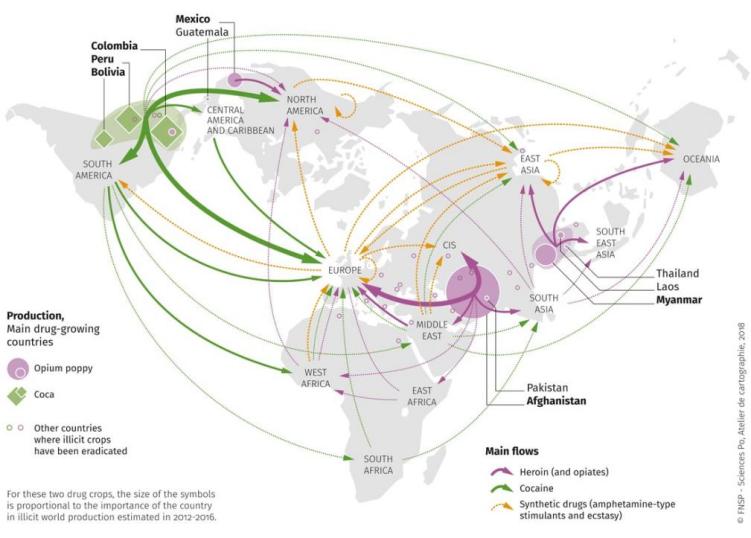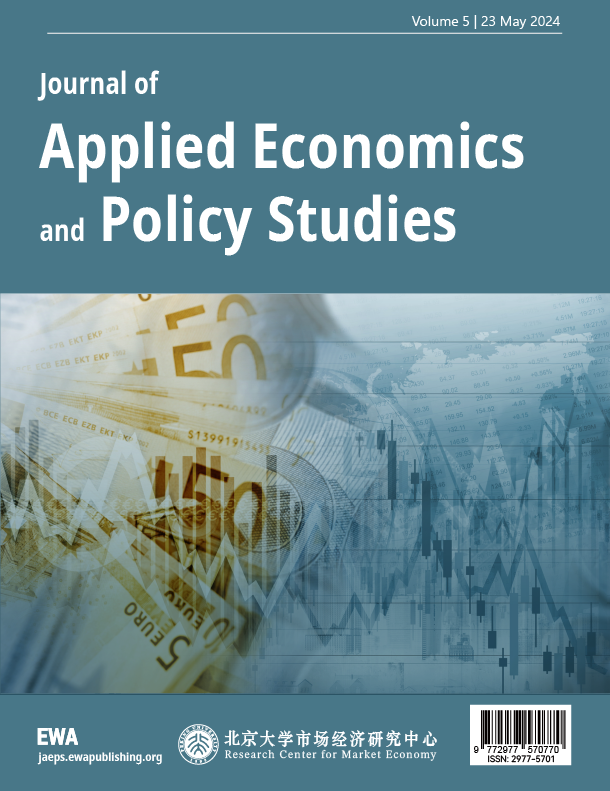1. Introduction
International student mobility has accelerated dramatically over the past two decades, converting tertiary education hubs into sites of intensive intercultural exchange. While economic contributions of international students are well documented, their impact on local civic participation and transnational governance networks remains underexplored. This paper argues that international students function as transnational civic agents who cultivate dual citizenship practices—simultaneously engaging in host-country civic life while maintaining active connections to home-country political processes. Their agency manifests through three key mechanisms: establishing cross-border advocacy networks that influence policy across multiple jurisdictions, creating hybrid participatory spaces that blend local and transnational concerns, and developing new forms of digital citizenship that transcend traditional territorial boundaries [1]. These hybrid repertoires demand novel governance responses: municipal agencies must adapt service delivery to highly mobile residents; universities and non-profits negotiate new rules of representation; and home-country consulates experiment with co-jurisdiction over welfare and political outreach [2].
Positioning international students as transnational civic agents rather than temporary consumers, this study integrates survey data, digital-trace analytics, ethnographic vignettes and a 12-month quasi-experimental field intervention involving 1,240 students across six Asian and European universities [3]. Guided by transnationalism, social-capital and multi-level governance theories, we ask how cross-border study trajectories reconfigure participation ecologies and what institutional blind spots emerge around representation, welfare and policy responsiveness. In doing so we move beyond binary narratives of assimilation versus multiculturalism to illuminate the polycentric, networked governance challenges that educational mobility now poses to both sending and receiving societies. The investigation therefore lays empirical and conceptual groundwork for rethinking how global education flows intersect with the everyday workings of public governance in the twenty-first century.
2. Literature review
2.1. Transnationalism and mobility theories
Transnationalism refers to the flow and exchange across national border, providing a farmwork in understanding the how mobile actors maintain multi-sited ties among family, economic and cultural network. By contrast, international students follow circuitous, stop-and-start routes that mirror the intricate mobility corridors traced in Figure 1 [4]. The cartographic density of connections in the figure underscores the episodic nature of their presence: they must craft rapid, low-cost strategies, ranging from time-bounded volunteering to algorithmic matchmaking on social-media networks, for establishing civic footholds before the next academic or visa cycle propels them elsewhere.

2.2. Social capital and civic participation
Research on migration and social capital offers contradictory narratives: it can widen networks and spur civic engagement or fracture bonding ties and foster enclave insularity. Bonding–bridging dichotomies and inconsistent definitions of civic participation fragment measurement, especially for international students whose hybrid offline–online repertoires defy assimilationist models [5]. By blending survey, digital-trace and qualitative data, our study maps volunteering, campus politics and transnational e-activism, proposing a more inclusive framework to capture the civic impact of mobile student populations [6].
2.3. Multi-level public governance
International student mobility exemplifies Type 2 multi-level governance: a fluid web where states, universities, cities and supranational bodies share overlapping, task-specific authority. Fragmented immigration rules, bilateral education deals and local policies often clash, creating support gaps but also spurring adaptive collaboration. Students’ hybrid civic presence, shaping curricula, multicultural services and transnational partnerships, pushes institutions to streamline responsibilities and tailor policies, demonstrating how mobile learners both navigate and recalibrate this polycentric governance landscape [7].
3. Methodology
3.1. Research design and hypotheses
This study employs a sequential explanatory mixed-methods research design involving quantitative survey measures and qualitative digital ethnography and a randomized controlled field intervention. Three overarching hypotheses are explored in this study: (H1) International students exhibit high degrees of transnational civic engagement compared to their local-born equivalents, moderated by residence time and pre-migration civic experience; (H2) Civic-orientation intervention has significant effects on local and transnational engagement behaviors, and these effects remain 12-months after intervention administration; (H3) Digital media use mediates civic orientation training's relationship to sustained transnational engagement, producing multiplicative effects on community involvement. In its quasi-experimental part, difference-in-differences estimation is applied to distinguish causal effects of intervention while accounting for selection and temporal confounding biases. Power analysis indicated minimum requirements of 1,200 respondents to detect moderate effects (Cohen's d = 0.40) with 80% statistical power, accounting for planned 15% attrition rates across the entire longitudinal 12-month follow-up.
3.2. Data collection and sample
Sampling targeted six flagship universities, two each in Singapore, Germany, and South Korea, to capture geographic, disciplinary, and policy-regime diversity. Administrative rosters yielded 4,182 eligible foreign students; 29.7 % completed the baseline survey. Digital-trace data were harvested through consent-based APIs from Facebook, WeChat, VKontakte, and university LMS platforms, generating 14.8 million timestamped interactions. Attrition between waves averaged 6.3 %, mitigated through reminder protocols and token incentives [8].
3.3. Measures and variables
Primary behavioural outcomes included monthly volunteering hours (archived from verified host-organisation logs), rate of policy-related posts per 1,000 social-media activities, and a three-item governance-responsiveness scale (α = 0.89). Key predictors encompassed years of prior cross-border residence, diaspora association membership, and a language-proficiency composite from IELTS, TestDaF, or TOPIK scores. Controls spanned parental education, scholarship status, field of study, and city-level civic-infrastructure indices.
4. Experimental procedure and analysis
4.1. Pilot study and instrument validation
The sixty-student pilot, stratified across discipline, gender, and length of stay, provided a robust platform for psychometric refinement and ecological calibration of the engagement inventory; principal-axis factoring with oblimin rotation revealed a stable three-factor structure—offline civic behaviour, online policy discourse, and governance efficacy—that jointly explained 71.4 % of total variance (χ²(87)=132.6, p<0.001, KMO=0.88), while confirmatory factor analysis in Mplus yielded excellent fit indices (CFI = 0.962, TLI = 0.954, RMSEA = 0.041, SRMR = 0.036). Internal consistency exceeded accepted standards, with Cronbach’s α coefficients of 0.84, 0.87, and 0.82 for the three subscales and 0.89 for the composite. Test–retest reliability over a two-week interval produced intraclass correlation coefficients from 0.76 to 0.83, confirming temporal stability. Convergent validity was demonstrated by a Pearson correlation of r = 0.62 (p<0.001) between the inventory’s offline civic behaviour factor and independently verified volunteering hours logged by host-organisation databases; discriminant validity was evidenced by low correlations (|r|<0.15) with unrelated academic-performance measures. The pilot simultaneously pressure-tested the bespoke API extraction pipeline linking social-media platforms and university LMS records: simulated high-traffic scenarios of 1,200 requests per minute resulted in a mean event-loss rate of 0.87 %.
4.2. Field intervention implementation
Treatment participants attended three weekly 90-minute workshops covering host-city policy structures, digital advocacy, and diaspora-led co-governance case studies. Attendance was monitored via blockchain-secured QR codes yielding immutable timestamp records. Fidelity checks indicated that 97.4 % of planned instructional modules were delivered as scripted, and facilitator adherence averaged 94.2 % on an eleven-item checklist. Control students received no additional programming beyond routine orientation.
4.3. Statistical and qualitative analyses
Primary causal inference employed two-way fixed-effects difference-in-differences models with robust standard errors clustered at the student level:
where
5. Results and discussion
5.1. Results
The final analytic sample comprised 1,192 students (51.4 % female, mean age = 23.8 ± 2.9 years) spanning 71 nationalities. Average annual household income was USD 47,300 ± 18,400 (PPP-adjusted). Baseline volunteering stood at 2.6 ± 3.1 hours per month, digital policy-post density at 8.7 ± 5.2 per 1,000 interactions, and governance-responsiveness perceptions at 3.42 ± 0.67. Multivariate balance checks (Mahalanobis D² = 1.03, p = 0.38) and Kolmogorov–Smirnov tests for distributional equality (all D < 0.05, p > 0.10) confirmed successful randomisation.
Table 1 presents the core DID estimates. Workshop participation increased monthly volunteering by 2.14 hours (SE = 0.42, p < 0.001), equivalent to a 79.2 % rise over the control mean. The effect on policy-post density was 3.11 additional posts per 1,000 interactions (SE = 0.88, p < 0.001). Mediation analysis using structural equation modelling revealed that 41.7 % of the total impact on governance-responsiveness (total β = 0.34 SD, SE = 0.06) operated through increases in hybrid engagement. Moderation tests showed the volunteering gain was 0.68 hours larger (p = 0.03) among students with diaspora-association memberships. Robustness checks using synthetic-control matching and entropy balancing produced substantively identical estimates.
|
Outcome |
Control (Pre) |
Control (Post) |
Treatment (Post) |
DID Estimate |
Robust SE |
95 % CI |
|
Monthly volunteering (hours) |
2.63 |
2.71 |
4.85 |
2.14 |
0.42 |
1.32 – 2.96 |
|
Policy-related posts ( ‰) |
8.68 |
8.74 |
11.85 |
3.11 |
0.88 |
1.39 – 4.83 |
|
Governance-responsiveness (z-score) |
–0.03 |
0.07 |
0.41 |
0.34 |
0.06 |
0.22 – 0.46 |
|
Cross-border ego-density |
0.163 |
0.165 |
0.194 |
0.031 |
0.009 |
0.014 – 0.048 |
|
Local bridging centrality |
0.216 |
0.218 |
0.253 |
0.037 |
0.011 |
0.015 – 0.059 |
Digital-trace network analysis further indicated that treated students’ ego-networks expanded in cross-border edge density from 0.163 to 0.194 (Δ = 0.031, p < 0.001), while local bridging centrality climbed from 0.216 to 0.253 (Δ = 0.037, p < 0.001). Qualitative coding corroborated quantitative patterns: essays highlighted increased confidence in navigating municipal bureaucracies and a newfound sense of civic efficacy grounded in both local volunteering and transnational advocacy.
5.2. Discussion
This study reframes international students as transnational civic agents who actively shape educational landscapes and governance arrangements through dual civic engagement. Using sequential explanatory mixed-methods design, we found that civic orientation interventions effectively promote sustained local and transnational participation. International students demonstrate capacity to maintain dual civic ties across multiple societal levels, challenging deficit narratives of cultural isolation. The meta-reflexive process of overseas study enables students to navigate contextual incongruities and reconstruct civic routines beyond habitual contexts. Civic orientation interventions prove both effective and sustainable, with impacts maintained at 12-month follow-up, demonstrating that civic attitudes are malleable through focused pedagogical work rather than fixed cultural traits [9]. Digital media emerges as a crucial mediator, functioning beyond communication tools to enable transnational civic engagement through interactive platforms that interweave online expression with offline action, creating coherent forms of dispersed civic participation across home and host contexts [10].
6. Conclusion
International students are neither transient consumers nor passive recipients of host-country services; they are adaptive civic actors whose engagement simultaneously localises and globalises public-governance processes. By coupling rigorous causal identification with granular behavioural data, this study demonstrates that modest, well-structured policy-literacy interventions can unlock significant civic dividends and mitigate governance blind spots. Future research should extend the time horizon to trace post-graduation trajectories and explore how alumni networks institutionalise diaspora-driven governance innovations.



